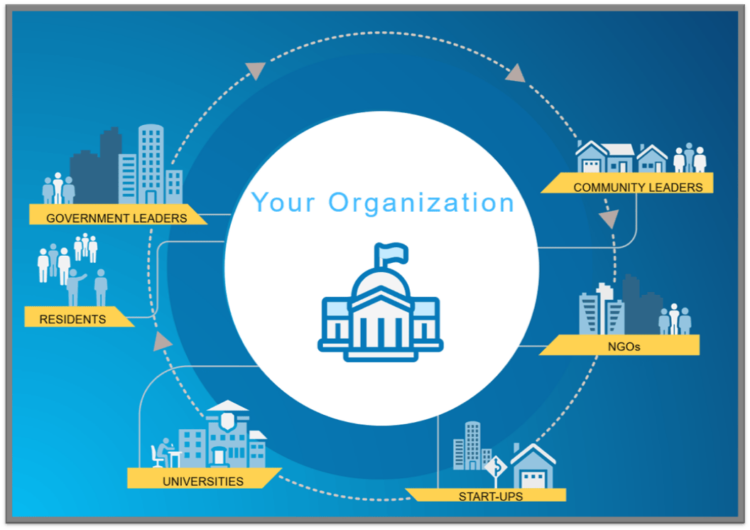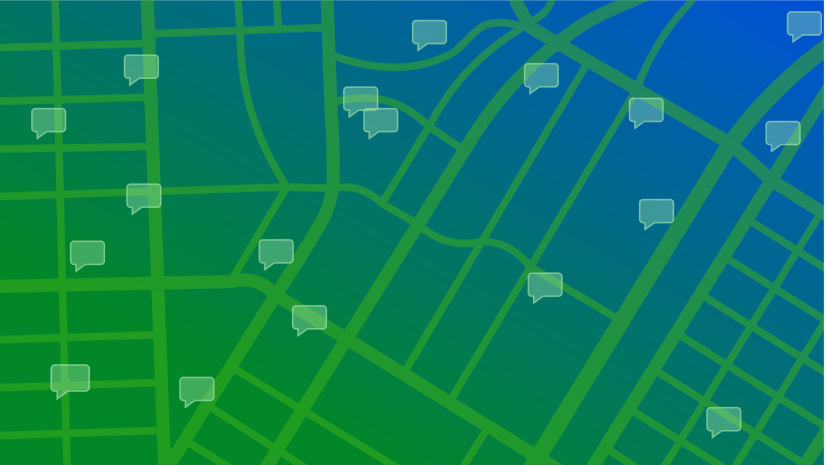Engagement Matters – Part 1
This article is the first part of a four part series on collaboration and engagement.
Part 1A Hub for
|
Part 2Empowering
|
Part 3Sustaining
|
Part 4Building
|
Click on any of the articles above to jump forward or backward
Engagement is the science of connecting with a community of people that need to know about a challenge and have their voices heard. Is your city starting a major pothole repair initiative and you need feedback from residents about what areas should be prioritized? Perhaps you lead a group of volunteers that monitor endangered species and you need to coordinate their efforts and show their impact. Or maybe you’re trying to collaborate with staff within your organization around GIS initiatives to share knowledge and technical resources. Regardless of your use case, and however you define what your community is, collaboration and engagement are keys to your success.
Common communities
Effective collaboration and engagement starts with clear initiatives – or large projects – and they always involve stakeholders. What varies from initiative to initiative are the number of different stakeholder communities that your initiative affects. If you have a pothole repair initiative, you might envision your stakeholder communities including city leaders and residents. That’s a good start, but you should also consider:
- Community Leaders: non-elected leaders that advocate for specific groups of residents including minorities, elderly, disabled, and other underrepresented groups.
- Non-Governmental Organizations: groups that support social or environmental movements like human rights, equity, fiscal/budgeting issues, and conservation/preservation.
- Startups: new companies that have unique ways of approaching solutions and seek out complex challenges to build products or services around.
- Universities: researchers that analyze trends and look for specific patterns of use of technology and leadership that can be replicated in other places

This is just a sampling of the broad types of communities you might encounter when thinking through your initiative’s impact prior to engaging people. Each community has its own unique perspective, capabilities, and values that impact how it perceives your initiative and might interact with you.
Bringing communities together
With all this complexity across communities it’s critical to have a place where people can gather. In our modern, fragmented, and fast-paced world we can’t rely only on the town square or local pub model to connect with people. We need a digital presence, a Hub, where people can have fact-based conversations, share their opinions and preferences, all on their own schedule. The most effective Hubs always include:
- A great layout with thoughtful design that is pleasing to see but also supports the message you’re trying to communicate.
- Interesting stories that use visualizations (maps, graphs, photos, and even videos) that quickly and clearly communicate concepts to non-experts.
- Provide access to open data that is used in the stories in the Hub which helps build trust through transparency and enables communities with data skills to dig deeper.
- A clear call to action that guides your community members’ feedback and involvement
These Hub characteristics help to guide your communities through information in ways that create meaning and build trust.
Creating meaning and building trust
When you build content in your Hub, you’ll often rely heavily on data. The challenge is that data is inherently difficult for most people to understand and make use of unless it’s organized and made approachable. This difficulty is an opportunity for you. When you make data approachable by organizing it into a Map, Dashboard, Chart, or Project, your stakeholders will be more likely to engage with you. The clearer your message and the more direct you are, the faster you can build trust.
This trust is crucial when you offer stakeholders a way to submit Surveys, engage in Discussions, join the digital Community with a named user account to enable trusted contributions, and even to participate in community outreach Events.
An analogy: the Public Park
Imagine the public park near where you live. You know this park and so do your neighbors. It hosts a variety of civic activities throughout the day and the year and supports different uses by different people in the community. Your Hub can be the digital equivalent of this. One place for everyone to gather and interact how they want, but with a set of common goals: fitness, play, and community.
But how did your park come to be and how will it evolve over time? The best park planners engage community members– via a Hub – to plan improvements that the community wants to see.
- Where should we put a new playground? That’s a Discussion.
- How many people use the park on a weekday? That’s a Dashboard.
- Are there adjacent properties that can be bought and added to the park? That’s a Map.
- The tennis courts are being resurfaced, but when will they be ready for play? That’s a Project.
- There’s going to be a movie in the park on Friday night? That’s an Event.
- The town is asking for help in mapping trees? That’s a volunteer Community.
Engagement is continual
Just like a park evolves over time, so too does engagement. It’s a continual process of showing results, getting feedback, doing work, and over again. A park is a fixture in the community and serves as a place that has something for everyone. Your Hub can be the same resource, now and in the future.



Article Discussion: